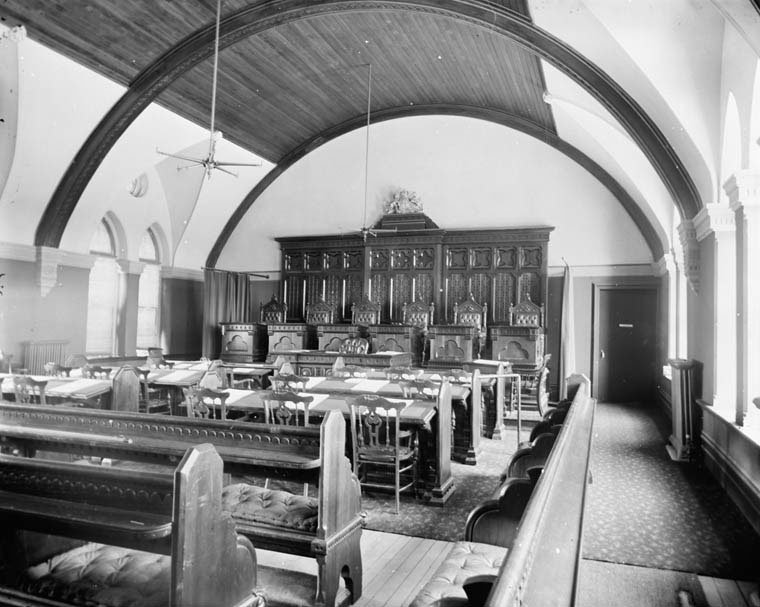As far as groundbreaking jurisprudence goes, the first decision passed down by the Supreme Court of Canada — dated June 5, 1876 — may seem a bit underwhelming.

In
Taylor v. R., the highest court in the land ruled that it had no jurisdiction to hear an appeal emanating from Ontario, given that the lower court had issued its ruling before the SCC had been established.
This obscure bit of trivia is about to become a lot less obscure with the announcement yesterday that the SCC — with the help of its technology partners and provincial law foundations — has finally succeeded in making its complete collection of
historical decisions available online (hence, the link above).
The court credits Lexum, the software company that manages the SCC’s online repository, as the driving force behind the decision to disseminate its complete collection.
Pierre-Paul Lemyre, head of business development at Lexum, says his company was there right at the very beginning, when in 1993, Daniel Poulin — the University of Montreal law professor who would go on to found Lexum — approached the court with the idea of publishing decisions on the newfangled medium known as the Internet.
The SCC became the first Canadian court to post decisions online, and only the third or fourth court in the world to do so. The first online decisions came from the Supreme Court of the United States, published by Cornell University’s Legal Information Institute (LII).
“So it was at the very beginning of what we know of as the Web today,” says Lemyre. “From the get-go, the dream was that at some point all decisions, the complete collection, would be available for people to consult and use online.”
Only current decisions, however, were being published until 2007, when Lexum partnered with CanLII (the Canadian version of Cornell’s LII) to solicit funding from the provincial law foundations in order to post Supreme Court decisions retroactively.
The initial idea was to go back 10 years. In 2007, Lexum and CanLII worked with the Law Foundation of Ontario to publish decisions going back to 1986; in 2009, the Law Foundation of British Columbia came on board; in 2010 Alberta; in 2014 Quebec; and by the end of 2014, Lexum and CanLII funded projects to include SCC decisions emanating from PEI, the territories, and Newfoundland and Labrador.
Working with the provincial law foundations, Lexum and CanLII began to fill in the blanks online. By the end of 2014, only 522 appeals remained — those from Manitoba, New Brunswick, Nova Scotia, and a few older appeals from the Federal Court.
Then, earlier this year, the Supreme Court decided to finish the job with a $25,000 grant that Lexum and CanLII used to collect, scan, and type out the remaining appeals.
Lemyre says the SCC’s funding does more than provide a resource: “For the people involved in the judicial field, it’s a statement that the courts should play a central role in improving access to their own decisions, which they are not all doing.”
Even as Lexum announces the complete collection of SCC decisions online, however, Lemyre says they’re not quite done yet.
While all decisions published in the official
Supreme Court Reports catalogue are now available online, decisions that were not reported — mainly because they were considered insignificant — remain a mystery.
“So for the next step, we’re thinking of looking at the unreported decisions, because before 1970, not all decisions from the Supreme Court were actually put in the reports. We estimate that there may be about 500 older decisions that were not reported.”
These decisions would be more interesting from a historical perspective than a legal one, but Lemyre says you never know.
“We’ll discover that when we process them, but we can run into interesting things there. . . . To cite them you have to know they existed. Probably lawyers involved in the file itself would know about them, but that’s about it.”

 In Taylor v. R., the highest court in the land ruled that it had no jurisdiction to hear an appeal emanating from Ontario, given that the lower court had issued its ruling before the SCC had been established.
In Taylor v. R., the highest court in the land ruled that it had no jurisdiction to hear an appeal emanating from Ontario, given that the lower court had issued its ruling before the SCC had been established.